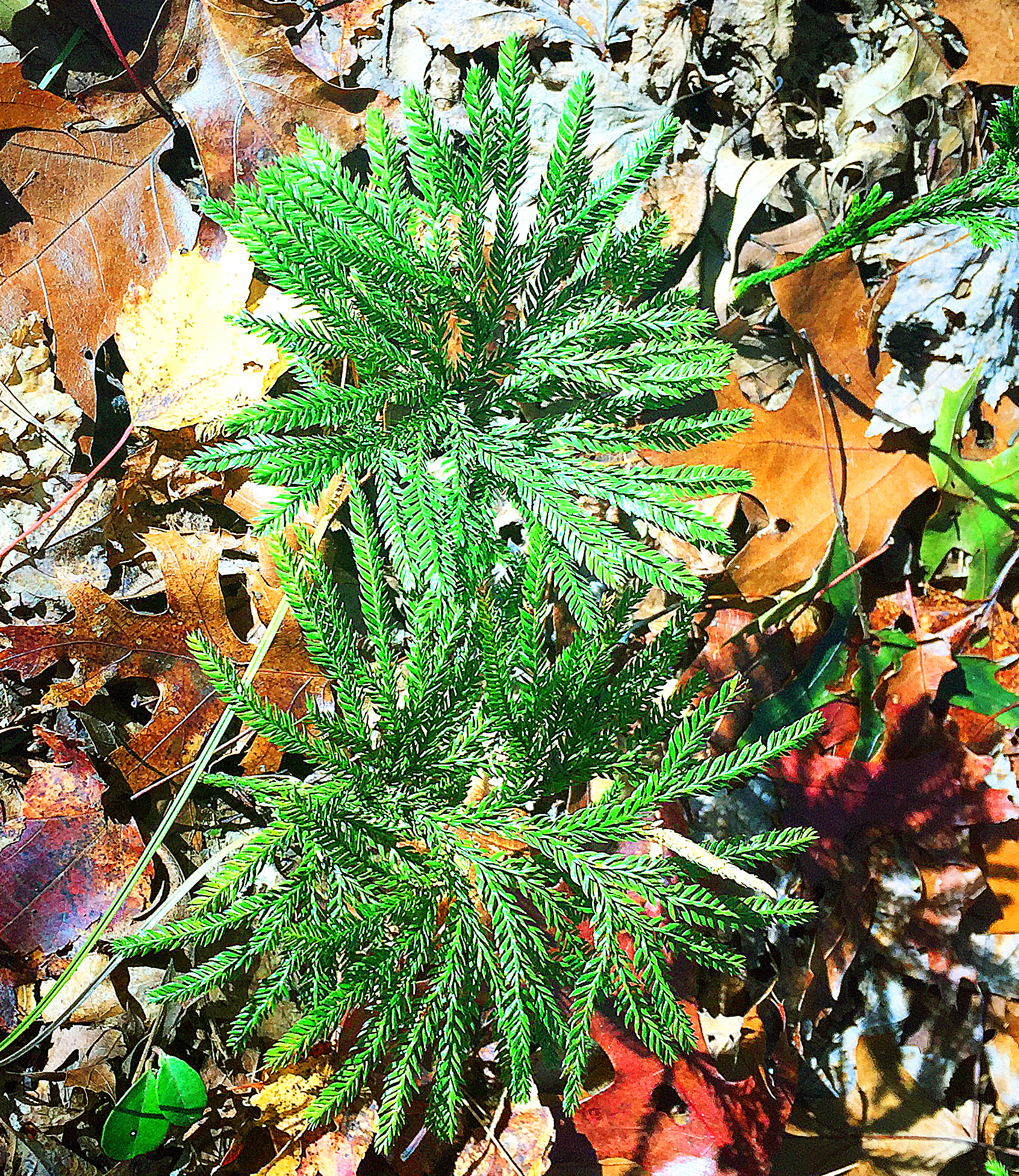The most obvious feature, as I walk in the woods now, is the lost leaves on the ground and the opening of the light onto the forest floor. It can be both dramatic and beautiful. So I find myself looking downward – always a good idea if you don’t want to fall on your face or have your ankles become so much snake food, and one of the things that I have spotted are the delicate club mosses of Figure 1. This is Diphasiastrum digitatum also known as groundcedar, running cedar or crowsfoot. What they really look like are miniature pine trees which they are not. But they were once widely distributed as a form of Christmas greenery – indeed, almost to the point of decimation. The lycophytes themselves have survived longer than the profession of lycophyte-picker. And, of course, your mind lapses into images of prehistoric forests. These have been around for a very long time.,
What I remember most fondly about the club mosses is that my father taught me, when I was in the Boy Scouts, that you could use these little plants to scrub out your pots and pans. They were in essence “nature’s own Brillo pads.”
You will note in Figure 1, how the lower plant has at about 3 o’clock a little brown shoot. This is the fruiting body that produces spore. I pulled gently at one and there was a microcloud of dusty release. We have, in fact, previously spoken about these oily spore. Because of their combustibility and high surface to volume ratio, this Lycopodium powder, used as an early flash-powder for photography. While they exploded on ignition they were still a lot safer than magnesium powder.

